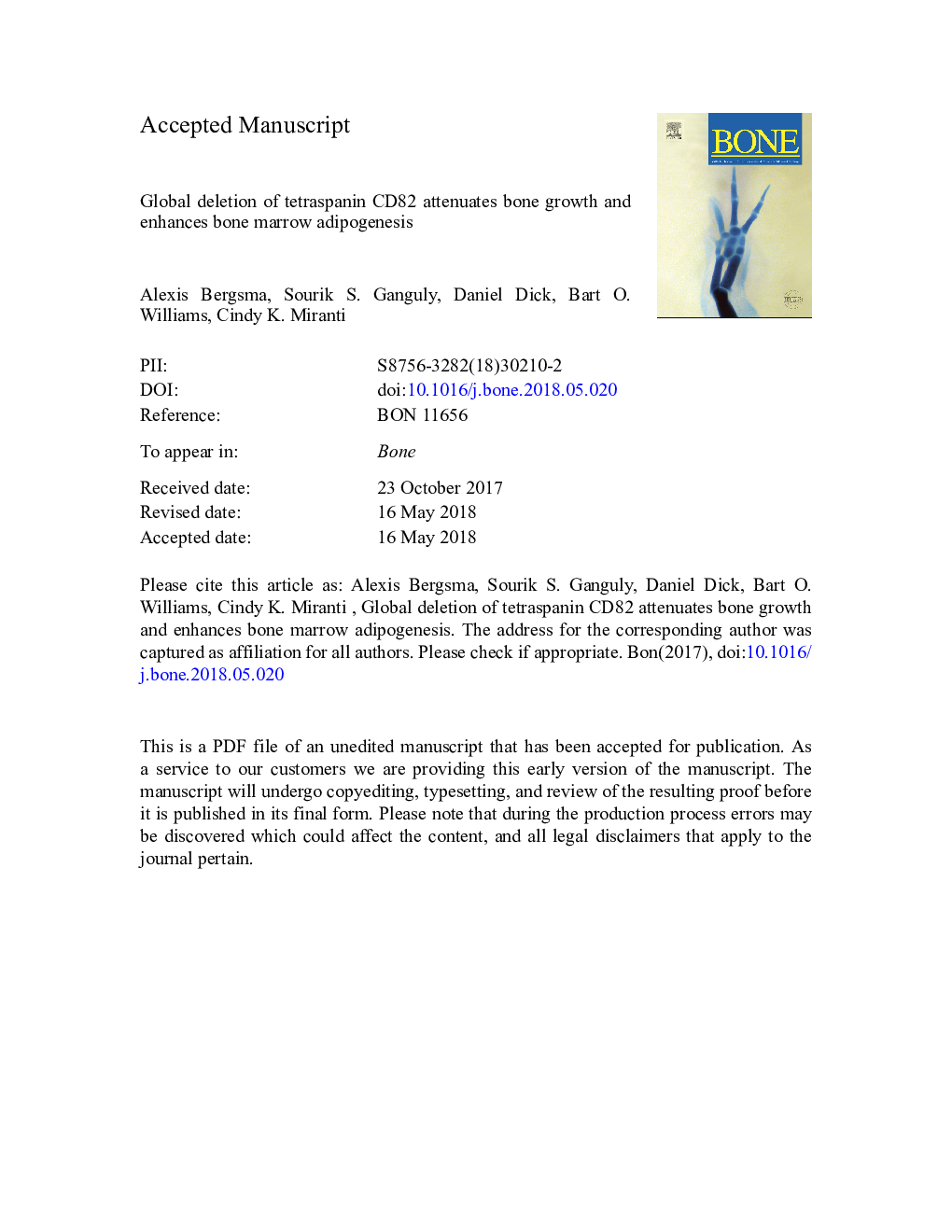| Article ID | Journal | Published Year | Pages | File Type |
|---|---|---|---|---|
| 8624849 | Bone | 2018 | 33 Pages |
Abstract
CD82 is a widely expressed member of the tetraspanin family of transmembrane proteins known to control cell signaling, adhesion, and migration. Tetraspanin CD82 is induced over 9-fold during osteoclast differentiation in vitro; however, its role in bone homeostasis is unknown. A globally deleted CD82 mouse model was used to assess the bone phenotype. Based on microCT and 4-point bending tests, CD82-deficient bones are smaller in diameter and weaker, but display no changes in bone density. Histomorphometry shows a decrease in size, erosion perimeter, and number of osteoclasts in situ, with a corresponding increase in trabecular surface area, specifically in male mice. Male-specific alterations are observed in trabecular structure by microCT and in vitro differentiated osteoclasts are morphologically abnormal. Histomorphometry did not reveal a significant reduction in osteoblast number; however, dynamic labeling reveals a significant decrease in bone growth. Consistent with defects in OB function, OB differentiation and mineralization are defective in vitro, whereas adipogenesis is enhanced. There is a corresponding increase in bone marrow adipocytes in situ. Thus, combined defects in both osteoclasts and osteoblasts can account for the observed bone phenotypes, and suggests a role for CD82 in both bone mesenchyme and myeloid cells.
Related Topics
Life Sciences
Biochemistry, Genetics and Molecular Biology
Developmental Biology
Authors
Alexis Bergsma, Sourik S. Ganguly, Daniel Dick, Bart O. Williams, Cindy K. Miranti,
